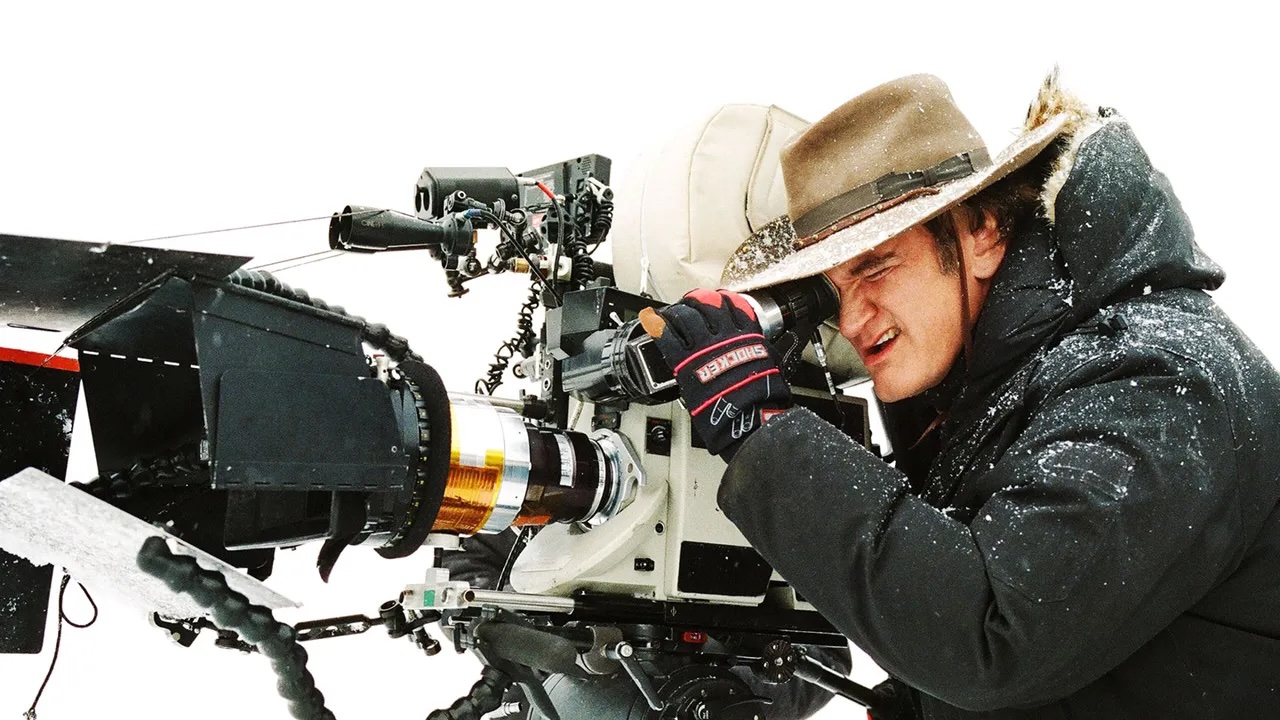
Guest post by: Joe Aliberti, Luke Taylor & Matthew Helderman
Bigger film budgets continue to dwindle. Smaller film sets continue to appear. Camera technology and film-centric software continue to evolve.
Through all the change, one aspect of film production has remained the same: difficult directors. As a producer, I understand this. Filmmakers are passionate people by nature. Their work is the ultimate fruit of their labor, and they only want to make quality of the highest caliber they’re capable of.
Of course, there are a few directors in our industry who have a license to demand their perfected vision — David Fincher and James Cameron have proven their artistic credibility, skill set, and commercial viability through consistent quality work and perseverance.
Yet, as an independent producer, I’m often presented low-budget films helmed by first-time directors with an unrealistic approach to execute their vision on a budget — most often due to lack of experience. This serves not to lessen ambition, but to provide guidance for amateur, working or budding professional directors.
THE NUMBERS
The year 2013 saw monumental worldwide numbers — $30 billion in global box office from 622 films released theatrically around the world. Half of this amount, however, stems from films listed in the top 50 releases of the year. Fewer than 160 had budgets greater than $1 million. My point being, as a universal audience we’re more likely to see films with A-listers and high production/distribution budgets, but these films are disproportionate to the majority released per year.
The reality is simple — there are more films made for shoestring budgets than made by studios for tentpole release. So why am I constantly bombarded with directors with shoestring budgets trying to make tentpoles? Or first-time directors demanding their films look like those of Martin Scorsese & Wes Anderson when those films are made by masters with years of experience and higher budgets? It’s definitely not a lack of vision; it’s a lack of a realistic approach to a working & sustainable career as a film director.
Realistic Approach: This is my first film — I’ll choose/write a great story, with a few compelling characters, and one primary location. My influences are Rope and Primer.
Unrealistic Approach: My first film needs to put me on the map — I need an A-list ensemble cast and an action- packed, effects-driven story. My influences are Rush Hour and Goodfellas.
As a director, you must remain wary of the unrealistic approach. Be confident in your ability to make a great first film by understanding and respecting the nature of the business of cinema and not just the art of cinema. One drives the other and having a grounded sense of reality in both spaces will propel your career. Too many directors are focused on being the wild “auteur.” That is fine if you’ve made as many successful films as Quentin Tarantino, but if you’re reading this, chances are you have not.
THE SCRIPT/VISION
Perfect the story — Don’t submit your script until it’s perfect. Get rid of all the spelling mistakes, make sure it’s formatted correctly, and don’t go into too much detail on shot selection, set design, etc. You have a team for that; just tell us the story.
Leave the epics alone — When you're writing/working on your script, don’t think about aerial coverage, techno-cranes, hundreds of extras, explosions or rare picture vehicles. Create an engaging story with 2-4 compelling characters — again, just tell the story.
Focus on payoff/motivation — Not just in terms of macro (climax) but micro (scene construction & dialogue). The audience will be more interested in this than a dolly or crane shot (lots of extra dollars), which they probably won’t even notice. Your characters should be motivated by something interesting — every scene should have a purpose and the dialogue, blocking, & actions should drive that motivator.
CASTING
Expectations — You’ll rarely have the ability to cast true A-listers. You may not even get B-listers. Casting is obviously an important factor for your ROI/distribution potential, though you may need to tone down your expectations; you should focus on making the best film. Find great actors who can bring your characters to life. You’d be pleasantly surprised with the talent level of unknown stage actors or working class actors in one of LA’s or NY’s thousands of acting troupes.
Casting sessions — Provide potential cast choices with a scene from your project or a scene from your favorite film or play. Have them let loose and get an idea of their acting “chops.” So many first-time directors just want actors to arrive on set and say the line — they believe their script or their vision is strong enough. Believe me, it’s not as immaculate as you think — you want actors who can actualize the character.
Communication — Learn how to communicate with your actors instinctually. Try and tune in to a wavelength that only you and she/he can feel, and most importantly, move them past acting, and into behavior. Help them create a world that is realistic and you won’t need Oscar winners — you’ll create new ones.
CREW MEMBERS
Cinematography & art design — Your key creatives on set are your DP and production designer. You are not above them; you work in unison with them. You have the most prestigious credit, but that credit is a culmination of the three of you (and wardrobe, makeup, props, etc.). Be clear about your (realistic) vision, and help them help you achieve it.
Surroundings — Your set should be filled with crew members who are proficient in what they do. Skimping on crew for students or crew members who will accept deferred payments is not always the best option. Professionals are to be hired, they’re not volunteers.
Embrace intimidation — DPs and production designers have lots of confidence - their jobs call for it. So must a director. Being intimidated by a DP or PD who excels is normal, but don’t let that hinder your decisions on set. Play the fine line well enough to avoid getting stepped on, but always allow for their input. Believe it or not — they know more about their particular department than you. What you know more than them is the story and the character, which you’ve been honing to perfection with your cast.
BUDGET/FINANCE
Raise — Your budget is not coming from Harvey Weinstein - not yet at least. Film investors need to mitigate risk just like any other industry. Find people close to you that believe in you and your passion, explore pre-selling territories and utilizing tax rebate opportunities to guarantee return.
Approach — Pitch your story in a very clean and concise manner; long-winded details are unnecessary. Have confidence in your business plan and current element attachments. Display knowledge and understanding of risk mitigation and how to lessen financial exposure through various financing options. Provide key details on your team and a realistic and thorough plan from inception through distribution.
Professionals — Make sure your budget & schedule are done properly. Many amateur filmmakers fail to understand that they are not professionals and thus must surround themselves with experienced professionals. Do not fall into the trap of thinking you can get by without paying a dime — your singular preparation will not be fail-safe.
SCHEDULE
Pare down — Keep it to 18-22 days if you’re shooting a film at $1M or below. Max. Get it to 15 if the script is simple enough. If you can stay in one primary location and are telling a story that the audience cares about, you can push through here. 12 Angry Men, Reservoir Dogs, Dial M for Murder — these movies take place in one primary location. As an audience, we live with it, because the story and performances are compelling enough.
LOCATIONS
One & done — Locations will eat up all of your budget at the micro low-budget level. Traveling to a new location every day or performing company moves is not feasible. You’ll lose time with travel, transportation, pre-lighting, set dressing, striking, etc. Keep it simple.
Focus — Your team can make the location a character in the film. Make this location interesting and dynamic by getting your actors acquainted with the space. It will begin to feel like home to them, and make their performances real. Additionally, your art team will constantly be finding new ways to dress, and your DP will constantly be finding interesting new ways to cover the action. Your amateur film will start becoming a professional one.
WATCH FILMS DIFFERENTLY
Construction — Have a beginning, middle and end to every scene. To every piece of dialogue. To every piece of action. Think of your script as a calculator that adds scenes together to make a whole. Pick up on this in films like Raging Bull and television shows like Mad Men.
Influences — Refine them. Scale your influences back to 1 or 2 shots, scenes, or filmmaker styles that resonate with you. Rather than copying (again, you probably won’t have the budget to do so justifiably), focus on how the essence of these scenes can drive your own story forward, and you’ll be well on your way to creating a style of your own.
AUDIENCE
Care — Make sure you always have the audience in mind. Too many filmmakers are worried about their vision, their story, their preference, etc. Make sure you’re adding personal touches to your film that your audience can relate to as well. Cinema is a shared experience — don’t hog it all for yourself.
Editor — This person will construct your film and be its first audience member. Heed to her/his advice wisely — they’re great storytellers.
Be — Take a step back when you can and try your hardest to watch your film as honestly as you can. Become an audience member. Don’t be afraid to critique yourself and do not become overwhelmed if what you’ve tried to accomplish doesn't come across onscreen. Work with your team to fix these problems. After all, the entertainment industry is just a long series of “noes” — make sure you have a solution to all of them and you’ll be fine.
BondIt was founded by independent film producers Matthew Helderman & Luke Taylor of Beverly Hills based Buffalo 8 Productions. Having produced 30+ feature films, the team recognized a dilemma in the production process — union deposits — and launched BondIt to resolve the situation to assist producers & union representatives alike. www.BondIt.us | www.Buffalo8.com
Tags
Get Our Screenwriting Newsletter!
Get weekly writing inspiration delivered to your inbox - including industry news, popular articles, and more!


























